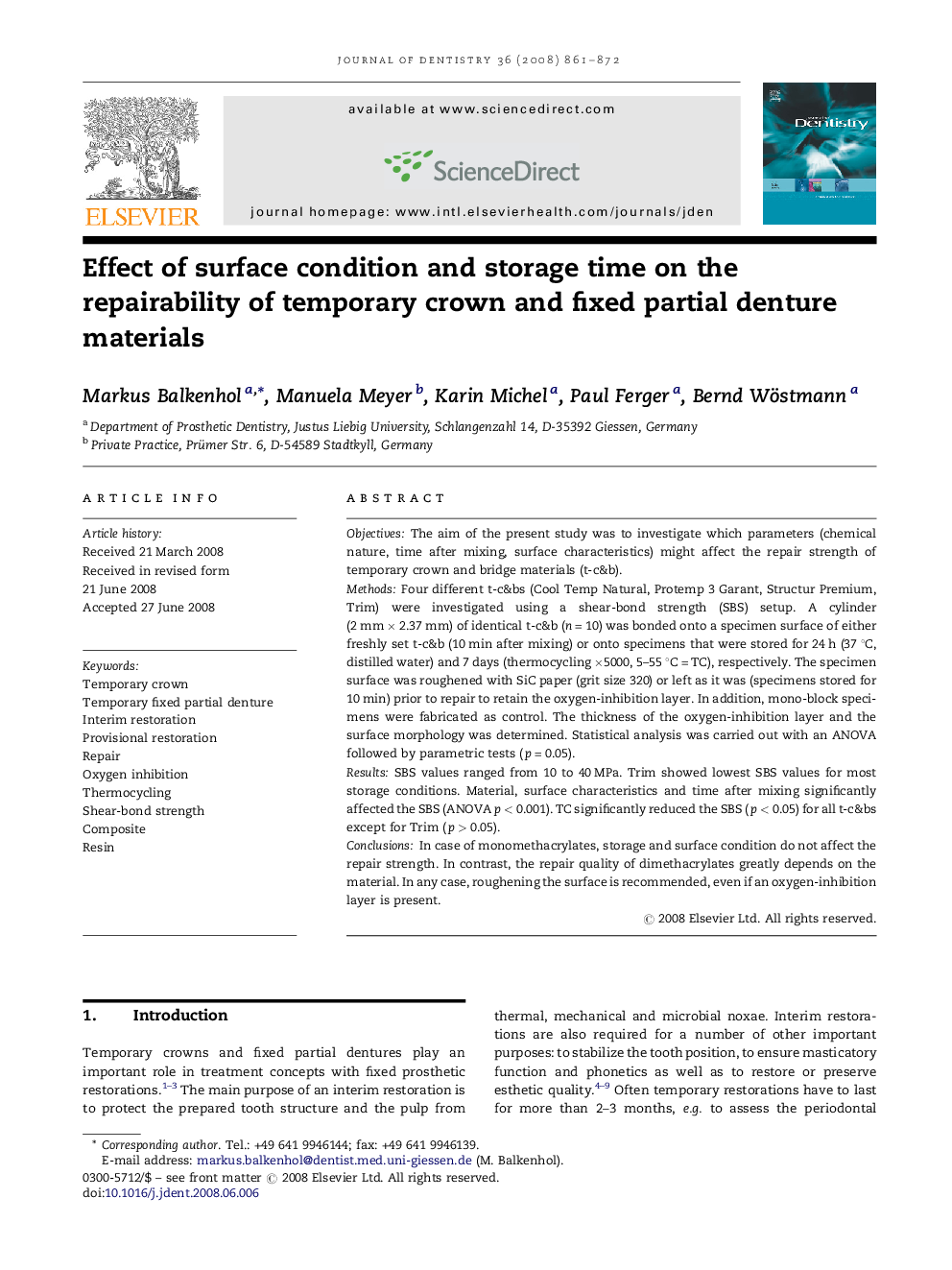| Article ID | Journal | Published Year | Pages | File Type |
|---|---|---|---|---|
| 3146394 | Journal of Dentistry | 2008 | 12 Pages |
ObjectivesThe aim of the present study was to investigate which parameters (chemical nature, time after mixing, surface characteristics) might affect the repair strength of temporary crown and bridge materials (t-c&b).MethodsFour different t-c&bs (Cool Temp Natural, Protemp 3 Garant, Structur Premium, Trim) were investigated using a shear-bond strength (SBS) setup. A cylinder (2 mm × 2.37 mm) of identical t-c&b (n = 10) was bonded onto a specimen surface of either freshly set t-c&b (10 min after mixing) or onto specimens that were stored for 24 h (37 °C, distilled water) and 7 days (thermocycling ×5000, 5–55 °C = TC), respectively. The specimen surface was roughened with SiC paper (grit size 320) or left as it was (specimens stored for 10 min) prior to repair to retain the oxygen-inhibition layer. In addition, mono-block specimens were fabricated as control. The thickness of the oxygen-inhibition layer and the surface morphology was determined. Statistical analysis was carried out with an ANOVA followed by parametric tests (p = 0.05).ResultsSBS values ranged from 10 to 40 MPa. Trim showed lowest SBS values for most storage conditions. Material, surface characteristics and time after mixing significantly affected the SBS (ANOVA p < 0.001). TC significantly reduced the SBS (p < 0.05) for all t-c&bs except for Trim (p > 0.05).ConclusionsIn case of monomethacrylates, storage and surface condition do not affect the repair strength. In contrast, the repair quality of dimethacrylates greatly depends on the material. In any case, roughening the surface is recommended, even if an oxygen-inhibition layer is present.
